- Home
- T. J. English
Havana Nocturne Page 4
Havana Nocturne Read online
Page 4
And then the unthinkable occurred.
In April 1942, Lansky was approached by his and Luciano’s attorney, Moses Polakoff, who had himself been approached with a startling proposition.
Apparently, with the United States now deeply embroiled in the war in Europe, U.S. naval intelligence had become unnerved at the number of U.S. and British ships being sunk by German U-boats. In the month of March alone, fifty ships had been incapacitated. Not only that, but sabotage in the Port of New York had reached crippling proportions. It seemed as though New York’s waterfront was riddled with German, and possibly Italian, spies who were tipping off the enemy as to the whereabouts and capabilities of Allied naval forces.
This possibility had been underscored in dramatic fashion that February when the ocean liner Normandie went down in flames while moored on the West Side of Manhattan. The Normandie was in the process of being converted into a gigantic troop carrier, renamed the Lafayette. Its high speed would have made it a difficult target for the German submarines that were patrolling the Atlantic, sinking literally hundreds of Allied vessels.
Multiple fires burned all over the Normandie. It seemed as though arson had been committed in several parts of the ship. Despite the efforts of local firefighters to put out the flames, the huge ocean liner eventually rolled over on its side and lay in the water like a beached whale.
Whether or not the destruction of the Normandie was in fact an act of sabotage was never established; either way, it was a tremendous psychological victory for the Axis powers. The Nazis were already winning the war in the open seas; now, they seemed to have found a way to penetrate the New York waterfront and wreak havoc at will.
To counteract this assault, U.S. naval intelligence had come up with a novel strategy. Since it was commonly believed that the forces of organized crime controlled much of the commercial activity in the Port of New York, why not enlist the Mob as their eyes and ears on the waterfront?
Joseph “Socks” Lanza, a barely educated hood who was considered the Mob’s main man at the Fulton Fish Market—the epicenter of the Port of New York—was astounded when he was contacted by the U.S. Navy. He was asked, point-blank, “As an American patriot, would you and your friends be willing to aid your country in its time of need and help us root out spies and saboteurs on the waterfront?”
Lanza answered that he did not have the authority to make such a decision on behalf of his “friends.” The only man who could give that kind of order to the Mob’s rank and file and have it followed was Lucky Luciano.
The navy then approached Moses Polakoff. Same question: would your client be willing to aid his country in its time of need? Polakoff sensed that Luciano would indeed be interested in mulling over the proposition, but he believed the overture would have to be made by someone within his tight circle of friends and associates. Polakoff recommended Meyer Lansky.
A meeting took place at Longchamps Restaurant, on West 58th Street in midtown Manhattan. The participants were New York assistant district attorney Murray Gurfein, who was head of the Rackets Bureau, Moses Polakoff, and Meyer Lansky. After explaining the situation to Lansky, as it had been explained to him by naval intelligence, the assistant D.A. asked the Mob boss, “Can Luciano be trusted?”
“Sure, he can,” said Lansky. “I’ll guarantee it.”
Later that afternoon, in room 196 at the Astor Hotel in Manhattan, Lansky met Lt. Cdr. Charles Radcliffe Haffenden, head of the B-3 (investigative) section of the Third Naval District’s intelligence staff. On a desk in front of Haffenden was a dossier on Meyer Lansky that read in part:
[Lansky] was a major figure in bootlegging operations and is concerned today with the manufacture, sale, distribution and the gathering of money from jukeboxes. He is a personal friend of every major Mafia leader and man of crime in America. He is deeply involved in illegal gambling.
Haffenden reiterated the navy’s position to Lansky, who remembered:
He had obviously been well briefed on my background. I could see the dossier on his desk. He was very careful and polite with me. He said he knew I had a reputation as a gangster but he also knew I was strongly against the Nazis. He appealed to me to be a good American and to think of the Jews suffering in Europe.
Lansky did not hesitate. He shook the commander’s hand and said, “You can count on me, and I believe Charlie Luciano will go along with the plan.” Lansky suggested that in order to facilitate making the pitch to Luciano, the Mob boss should be moved from Dannemora Prison in the far northern reaches of New York State to Comstock, which was near Albany.
“I’ll take care of it,” said Haffenden.
One month later, Lansky and Polakoff were on a train to Albany, where they were met by a driver who took them the rest of the way to Comstock.
Charlie Luciano, meanwhile, had no idea what was happening. He had been moved from Dannemora to Comstock, he was told, for “administrative reasons.” Late one morning in May, he was taken by the warden to a special interrogation room and instructed to wait for some visitors.
In the six years Luciano had spent in jail by this stage, he had had a few visits from his brother and sister, but he had not set eyes on his friend Lansky since his last days of freedom in New York City.
“When he saw us he could hardly believe his eyes,” recalled Lansky. “He stretched out his arms and shouted, ‘What are you doing here?’ Charlie threw his arms around me and kissed me. He’d never done that before, but he was pretty carried away.”
And so began one of the most unorthodox alliances in the history of the American underworld. In a series of meetings between the Mob and the military, Luciano pledged his full cooperation with the U.S. war effort. He ordered that the word go out along the waterfront for everyone to clamp down on “suspicious activity.” The results were immediate. On June 27, 1942, the Federal Bureau of Investigations (FBI) announced that eight German secret agents had been arrested in New York and Chicago. They had landed by U-boat in Florida and Long Island and brought ashore explosives and more than $170,000 in cash, together with maps and plans for a two-year-long campaign of attacks on defense plants, railroads, waterworks, and bridges. The FBI took the credit, but a crucial role in tracking down the Long Island saboteurs had been played by Commander Haffenden’s B-3 agents, using fishing fleet contacts supplied by Socks Lanza, Luciano, and Lansky.
There were similar arrests in the months that followed, and attacks on Allied ships at sea nearly came to a standstill. Later in the war, Luciano, at the behest of the navy, also supplied the U.S. Army with important logistical information in support of the July 1943 Allied invasion of Sicily. The go-between for Luciano and the military was always Lansky, who was even assigned his own code number as a naval intelligence contact. The entire project was given a code name: Operation Underworld.
In all the time of Luciano’s top secret cooperation with military intelligence, there had never been a quid pro quo arrangement that the Mob boss would be released early from prison. The way the deal had been suggested to the lawyer, Polakoff, was that Luciano’s cooperation would be made known to the powers that be when the time was right—presumably when the war was over. Which is why on VE Day, May 8, 1945, Moses Polakoff swore out a petition for a grant of executive clemency on behalf of his client, Charles Luciano.
Right away, there was a problem with the navy, which had decided that Operation Underworld was a subject not suitable for public consumption. A cover-up went into effect. It would be seven months before Polakoff was able to secure the necessary affidavits and present them to Governor Dewey.
By then Dewey still didn’t have all the details, but he had enough to declare in a public statement: “Upon entry of the United States into the war, Luciano’s aid was sought by the Armed Services in inducing others to provide information concerning possible enemy attack. It appears that he cooperated in such effort, although the actual value of the information procured is not clear.”
On January 4, 1946, inmate number 15684 at Comstock Prison was
told that his old nemesis, Tom Dewey, had granted him “special commutation of sentence.” Luciano’s euphoria was short-lived, however. Within days, he also discovered that, as a condition of his commutation, he was being deported from the United States to Italy.
Meyer Lansky did not attend the famous going-away party that was held for Luciano aboard the SS Laura Keene and attended by, among others, Senator Eduardo Suarez Rivas of Cuba. Lansky knew there would most likely be reporters there. In all his years in the Mob, his picture had never once appeared in the papers, and his name was rarely mentioned along with those of better-known Mob bosses like Luciano, Capone, and Costello. That was just the way Lansky liked it.
Besides, he’d had his chance to say bon voyage to Lucky days earlier. At an Immigration and Naturalization Service (INS) facility on Ellis Island, where Luciano was being held before his deportation, Lansky brought cash and some personal belongings to his friend. Despite the fact that Luciano would be seeing freedom for the first time in nine years, he was in a sour mood. Given his contribution to the U.S. war effort, he felt it was an injustice that he was being deported as a common “undesirable.”
It was then that Lansky soothed the savage beast by uttering the magic word.
Cuba.
THE FIRST TO ARRIVE for the December 1946 Mob conference in Havana was Vito Genovese. It was days before the gathering was officially scheduled to begin. Genovese had delivered a message to Luciano that he would be arriving early because he wanted to have a few days to lie around on the beach. Luciano didn’t believe that for a second. At forty-nine years of age, Genovese was squat and leathery, a creature of the night. In the sunlight, he would wither and die like a vampire.
Genovese was a mobster from the old school who had known Charlie Lucky since before the Castellammarese War of the late 1920s. In the Mafia, there were many roles to be played: there were the tacticians, the moneymakers, and the killers. Genovese was a killer. Not a thuggish, mindless killer, but a cunning, tactical killer. Some murders he ordered his underlings to carry out. Others he preferred to do himself. His method was the shotgun, up close and personal; preferably a gory head shot.
Over the years, Genovese had undertaken murders on behalf of Luciano, particularly during the Castellammarese War. But this did not result in a special bond between the two men. On the contrary, Luciano never liked “Don Vitone,” as he sometimes called Genovese when he wanted to make fun of him. Luciano believed that Genovese had designs on being capo di tutti capi. The position of boss of all bosses was something that Luciano, Lansky, and others on the Commission had done away with when the Mustache Petes were eliminated and the Syndicate was born. At the last major Mob conference, which took place at the Statler Hotel in downtown Chicago in 1932, Al Capone suggested that Luciano himself accept the top position. But Lucky turned it down flat. “None of that old-world Sicilian shit,” he told Capone and the other two dozen Mob bosses gathered together at the time. “This is America. All of us bosses will be equal in stature, just like a corporation.”
Upon his arrival in Havana, Genovese was set up in a penthouse suite at the Hotel Nacional, where the nearly two dozen men arriving for the conference would stay and the meetings would he held. The agreement was that there would be no private conferences. Everyone would meet together. The top item on the agenda was to be the Mob’s plans for Cuba and Luciano’s status now that he was out of prison, just ninety miles off the coast of the United States. Other items of interest to individual members could be discussed, but openly, with everyone in attendance.
Genovese had other plans. As Luciano remembered it:
It was a couple days before I was expectin’ anybody, around the 20th of December, when Vito called me at my house. It was a private number and he got it from Lansky. Tells me he come down a little beforehand to get a couple days’ rest on the beach. Now, I knew that little prick well enough to know he didn’t come to Havana to get a suntan. That wasn’t the way he operated. I knew he had somethin’ in mind…so I told him to come over to my house for lunch.
At Luciano’s mansion in Miramar, Genovese got right to the point: “Let me tell you what I think, Charlie. I think you oughta quit—I mean, retire. It’s a good proposition. You’ll have all the dough you can ever need. I give you my personal word on that. You won’t have to worry about what’s goin’ on. You won’t have to think up ideas on how to get back to New York—which is gonna be tough. And you’ll still be the boss, the capo di capi re. Everybody’ll think of you as the guy who put it all together back in the old days, and they’ll still come to you when they need advice. It’s like you’ll be the head, but I’ll be runnin’ things on the spot. That’s all there is to it.”
Luciano wanted to take Vito’s head off right there:
That guinea son of a bitch! I always knew he was a gutsy bastard, so I should’ve known that he’d have the nerve to stand up to me, to my face—just as long as no one else was around. All he really wanted was to take over and cut me out. His whole life he wanted to be boss…I looked at Vito very calm, like talking to a schoolboy, and I said, “You forget what happened in Chicago when I set this thing up. There is no Boss of Bosses. I turned it down in front of everybody. If I ever change my mind, then I will take the title. But it won’t be up to you. Right now you work for me, and I ain’t in the mood to retire. Don’t you ever let me hear this again, or I’ll lose my temper.”
The next day, when Luciano told his pal Lansky about the meeting at his home with Vito Genovese, he did so in a jocular manner. But Lansky didn’t see the humor in it. The thing Lansky was most concerned about was his baby—Cuba—and how to put into action the plan he’d had for years on how to develop and exploit the island. Here they were, days before the landmark conference at the Hotel Nacional, and already people were descending to the level of personal agendas and subterfuge.
This was not what the Little Man had in mind.
chapter 2
THE MOB’S PLAYGROUND
IN DIRECTOR FRANCIS FORD COPPOLA’S CINEMATIC CLASSIC The Godfather Part II, the Mob conference in Havana is portrayed as a kind of weekend sabbatical for the gangster elite. On a rooftop somewhere in the city (with Santo Domingo standing in for Havana), a cake is presented to the gathered mafiosi. Atop the cake’s frosting is a facsimile of Cuba drawn with sugary icing. The cake is cut into pieces and distributed to the gathered guests. The image constitutes a forceful and accurate metaphor—a valid representation of the thinking behind the conference—with the mobsters literally carving up the island and dividing the spoils among themselves.
Meyer Lansky is loosely depicted in the movie as Hyman Roth. Unlike the real-life Lansky, who was forty-four years old and in his prime at the time of the Havana conference, Roth is a man well into his seventies, bothered by an assortment of medical ailments. Lee Strasberg, the famous New York acting teacher cast as Roth, portrays the man as a kind of Lion in Winter, a fatalist whose only regret is that he won’t live long enough to see the full fruition of his dream of a mobster’s paradise in Cuba.
At the rooftop gathering, the movie’s protagonist, Michael Corleone, relates an incident he saw earlier that day. On a Havana street, a political revolutionary was being detained by the military police. Rather than be taken in, the revolutionary detonates a bomb, taking his own life and the life of a military captain.
“It occurred to me,” says Michael Corleone, “that the soldiers are paid to fight. The rebels aren’t.”
“What does that tell you?” asks Roth.
“They can win,” answers the Don.
The exchange suggests a remarkable prescience on the part of the Godfather. The rooftop conference and other events in the movie are presented as having taken place on the eve of New Year’s Day 1959, when the government of Fulgencio Batista was to fall dramatically to rebel forces. In real life, the mobster conference of December 1946 took place while Batista was out of power, and many years before the revolutionary movement in Cuba began to coalesce around the the
n largely unknown figure of Fidel Castro.
The Godfather Part II is more faithful to historical reality than many Hollywood movies, but it is still a work of fiction. The degree to which the movie has become a cultural touchstone on the subject of the Mob in Cuba, creating the visual representation and mythology that exist in the imagination of many Americans, is an example of how the story has been relegated to the level of folklore rather than preserved as fact.
In reality, the biggest gathering of American mobsters in fourteen years almost didn’t get off the ground. Luciano and Lansky had the power to summon two dozen high-ranking mobsters, but they had no control over the Cuban hotel workers’ union, the Sindicato Gastronómico. Three weeks before the conference was scheduled to begin, 480 employees of the Hotel Nacional went on strike. Almost immediately, the bars and salons, the kitchen, and the garage and terrace were left unattended. The hotel’s restaurant and café were only partly serviced. There was no one to clean the tables, serve drinks, or bring customers the world-famous Havana cigars. For the group of American mobsters who were scheduled to arrive at the hotel for an extended stay over the Christmas holiday, it was a potential disaster.
The union demanded a pay increase of 30 percent. The hotel management offered 25. Normally, labor negotiations in Cuba were handled through the courts. But on this occasion there was a high level of concern from above. President Ramón Grau San Martín and his prime minister, Carlos Prío Socarrás, took a special interest. They summoned the hotel management and strike representatives to the presidential palace and demanded a settlement. Eventually, the union got their 30 percent. Apparently there was intense political pressure to end the strike so that the upcoming gathering of American “dignitaries” could take place without a hitch.
From December 22 through December 26, the top two floors of the Hotel Nacional were closed to the public. Access to the grounds was guarded by a private security force. The hotel closed its doors to all outside interests other than those directly affiliated with the American mobsters. Nobody was allowed to enter the premises—not journalists, not the police, not bureaucrats of the Cuban government.

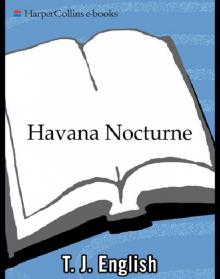 Havana Nocturne
Havana Nocturne Paddy Whacked
Paddy Whacked American Gangsters
American Gangsters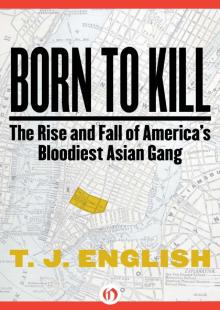 Born to Kill
Born to Kill Westies
Westies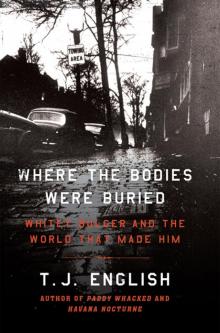 Where the Bodies Were Buried
Where the Bodies Were Buried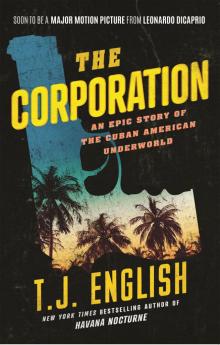 The Corporation
The Corporation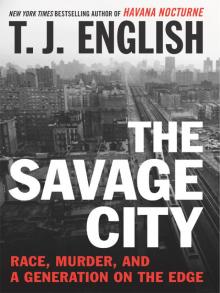 The Savage City
The Savage City